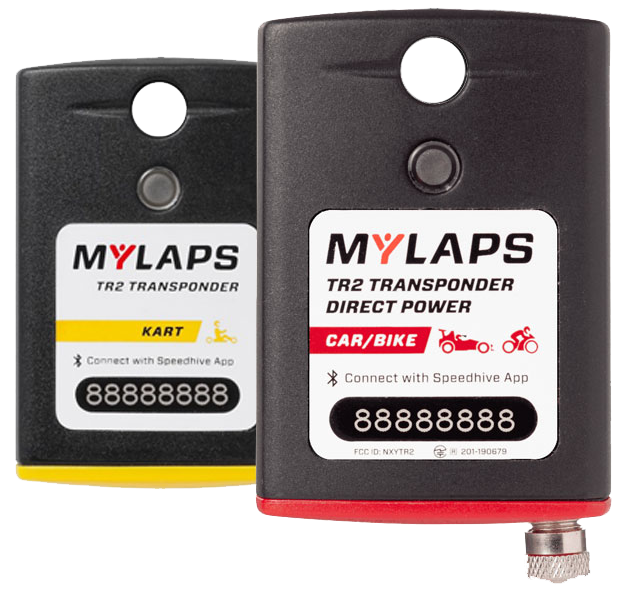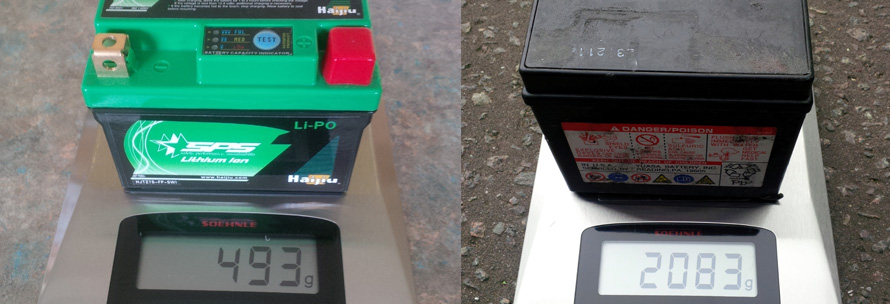- Mylaps Transponders
All - Mylaps Transponders View
 flexible subscription or purchase options to fit your needs
flexible subscription or purchase options to fit your needs rechargeable / direct powered
rechargeable / direct powered - Maintenance
- Accessories
- Lifts & Stands
- Electrics
- MotoGP
- Stock Clearance
0845 643 0659 Mon-Fr 9a.m.-6p.m.
Email [email protected]
Address
- Mylaps Transponders
 flexible subscription or purchase options to fit your needs
flexible subscription or purchase options to fit your needs rechargeable / direct powered
rechargeable / direct powered - Maintenance
- Accessories
- Lifts & Stands
- Electrics
- MotoGP
- Stock Clearance
Lead acid or Lithium?

We all know in racing that we try and reduce weight wherever possible and spend a fortune on lightweight titanium nuts and bolts. But can we save weight elsewhere? One major component which is usually overlooked but can reduce significantly... The lead acid battery usually fitted as standard to most sportsbikes.
We enlisted the help of Mark Sykes the current BEMSEE 2015 clubman 1000 Champion riding a 2012 Kawasaki ZX10 to help answer some questions. The aim was to carry out real life back to back tests comparing the standard lead acid battery with a replacement lithium battery, whilst establishing if spending that little bit extra on a lithium battery was worth it.
In terms of performance and weight saving it does look like a no brainer. But what do the facts say?
| Type | Volt (V) | Length | Width | Height | Weight (kg) | CCA |
|---|---|---|---|---|---|---|
| Standard | 12 | 114 | 71 | 106 | 2.083 | 80 |
| Lithium | 12 | 113 | 70 | 85 | 0.493 | 120 |
- Specifications - Slightly smaller in height but noticably lighter and more powerful than the standard battery.
- Weight - Standard lead acid Yuasa battery YTZ7S fitted to Kawasaki ZX10 2012 weighs 2.083 kgs compared to the lithium battery which weighs only 493 grams. Fitting a lithium battery saved 1.590 kgs which amounts to a saving of 76.3% over the standard lead acid battery’s weight.
- Cranking Amps - Standard lead acid has 80 CCA while the lithium has 120 CCA giving an additional 40 CCA, increasing the starting power by approximately 33%. This was noticeable during our tests on the Kawasaki ZX10 which gave the symptoms of a flat battery usingthe standard battery. The lithium provided a much better starting performance.
- Size dimensions - The lithium battery is 21mm lower in height but is supplied with foam pads that packed it out perfectly in the under seat tray.
- Price - Standard Dynavolt MG7ZS Gel Battery - £31.99, Lithium Ion Battery LIPO07A - £95.99 making the lithium battery 66% more expensive than the standard battery
- Advantages of Lithium Ion Batteries - Less volume and weight – 1/3 of normal lead-acid battery
- Quick recharge with big current – rechargeable with 10C current and 90% recharged within 6 minutes
- Higher Cranking power – 33% more starting power
- Excellent cycle life – more than 2000 cycles under JISD standard (lead-acid battery only 150-300 cycles)
- No spill – no acid inside, no leak problems
- No pollution – does not contain any acid and heavy metals such as lead, cadmium, hydrargyrum (mercury)
Summary
- 66% more expensive
- Has 33% more starting power
- Weighs 76.3% less
- Lasts 85% longer than the standard lead acid battery
- Worth it? Umm yes
Shop now and discover the difference here
No posts found
Write a review© 2005 - 2025 Moto Performance. Powered by CS-Cart and premium theme — © AB: UniTheme2
